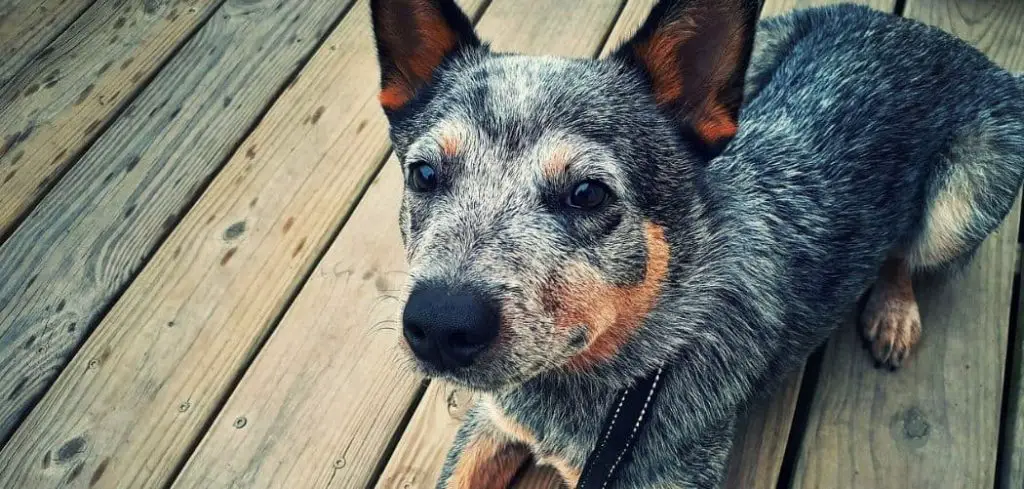Noticing clumps of fur coming off your dog more than usual can be alarming, especially if it happens suddenly.
While seasonal shedding is normal, excessive hair loss triggered by stress points to an underlying emotional or physical strain.
We outline the common reasons why dog shedding due to stress occurs, what you can do at home, and when to seek veterinary help.
Dog Shedding Due to Stress — Why It Happens
Dog shedding due to stress occurs because stress can disrupt your dog’s normal hair growth cycle, causing excessive shedding or even bald patches. When a dog experiences anxiety or fear, the body releases stress hormones such as cortisol and adrenaline.
These hormones can alter blood flow to the skin, weaken hair follicles, and trigger sudden hair release.
Stress-induced shedding can occur during vet visits, travel, loud events, changes in environment, or when meeting new people or animals.
In some cases, stress worsens existing skin or health issues, making shedding even more pronounced.

Dog Shedding Due to Stress: Common Causes
Vet Visits and Grooming Appointments
Trips to the vet or groomer can be highly stressful for some dogs. The unfamiliar smells, handling, and environment may cause an immediate release of loose fur.
This shedding often happens during the visit itself — you may notice fur on the exam table or groomer’s floor.
The stress response is short-lived for many dogs, but repeated intense stress can lead to ongoing hair loss.
Positive reinforcement and gradual desensitization can help reduce stress-related shedding during these visits.
Read more: Dog shedding excessively (Here’s why)
Loud Noises and Fireworks
Thunderstorms, fireworks, or other loud, unpredictable sounds can trigger acute stress shedding in noise-sensitive dogs.
During these events, fur may seem to fall out in handfuls as the dog’s muscles tense and skin blood flow changes. Other signs, like trembling, hiding, or panting, often occur at the same time.
Noise desensitization training and creating a safe retreat space can help prevent repeated stress reactions.
Travel and New Environments
Car rides, flights, or overnight stays in unfamiliar places can cause some dogs to shed excessively due to stress.
This is especially common in dogs that are not accustomed to travel. The combination of motion, confinement, and new surroundings can overwhelm them.
Gradual exposure to travel and familiar comfort items like bedding or toys can help reduce anxiety and related shedding.
Changes in Household Routine
Dogs thrive on consistency. Changes such as a new work schedule, moving house, or the addition of a new pet or family member can trigger stress-induced shedding.
You may notice increased fur on furniture, clothing, or bedding during these adjustment periods. Some dogs may also eat less or show clingy behavior.
Maintaining consistent feeding and exercise times during transitions helps minimize stress.
Meeting New People or Animals
Shy or socially anxious dogs may shed more when meeting strangers or other animals, especially in crowded or stimulating environments.
The fur loss can be immediate, as the stress response kicks in, or delayed over the next day or two.
Careful introductions and positive experiences can reduce the intensity of this stress trigger over time.
Stress Exacerbating Skin Conditions
In some cases, stress doesn’t directly cause the shedding but worsens conditions like allergies, dermatitis, or mange.
These conditions already compromise skin and hair health, and stress further weakens the immune system, allowing shedding to worsen.
Addressing both the underlying medical issue and the stress trigger is essential for recovery.
What to Do If Your Dog Is Shedding Due to Stress
First, identify the stress trigger and, where possible, remove or reduce it. For temporary stressors like thunderstorms, provide a safe, quiet space away from noise and activity.
Offer comfort without over-coddling. Calm, predictable interactions help your dog feel secure. Incorporating relaxing activities such as gentle play or chew toys can help distract them.
Maintain a consistent daily routine for feeding, walks, and playtime, as predictability reduces anxiety. Groom your dog gently and regularly to remove loose fur, which also stimulates healthy skin circulation.
If shedding happens often in certain situations, work on gradual exposure and positive reinforcement to build your dog’s confidence in those scenarios.
When to Call or Visit Your Vet
Contact your vet if shedding is excessive, persistent, or accompanied by bald patches, redness, itching, sores, or changes in appetite and energy.
Seek immediate veterinary attention if your dog is losing fur rapidly and also showing signs of pain, skin infection, or severe distress.
Your vet can rule out underlying medical causes and, if stress is the primary factor, recommend strategies or medications to help manage anxiety.
Read more: Dog Vomiting Due to Stress (Should you worry?)
Key Takeaway
Dog shedding due to stress occurs when emotional or environmental triggers disrupt the hair growth cycle, causing sudden or excessive fur loss. Common triggers include vet visits, loud noises, travel, routine changes, social interactions, and stress aggravating existing skin problems.
While mild, short-term shedding from stress often resolves once the trigger is removed, persistent or severe hair loss should be evaluated by a veterinarian.
By identifying stressors, maintaining consistent routines, and providing reassurance, you can help your dog stay calm, confident, and healthy.
